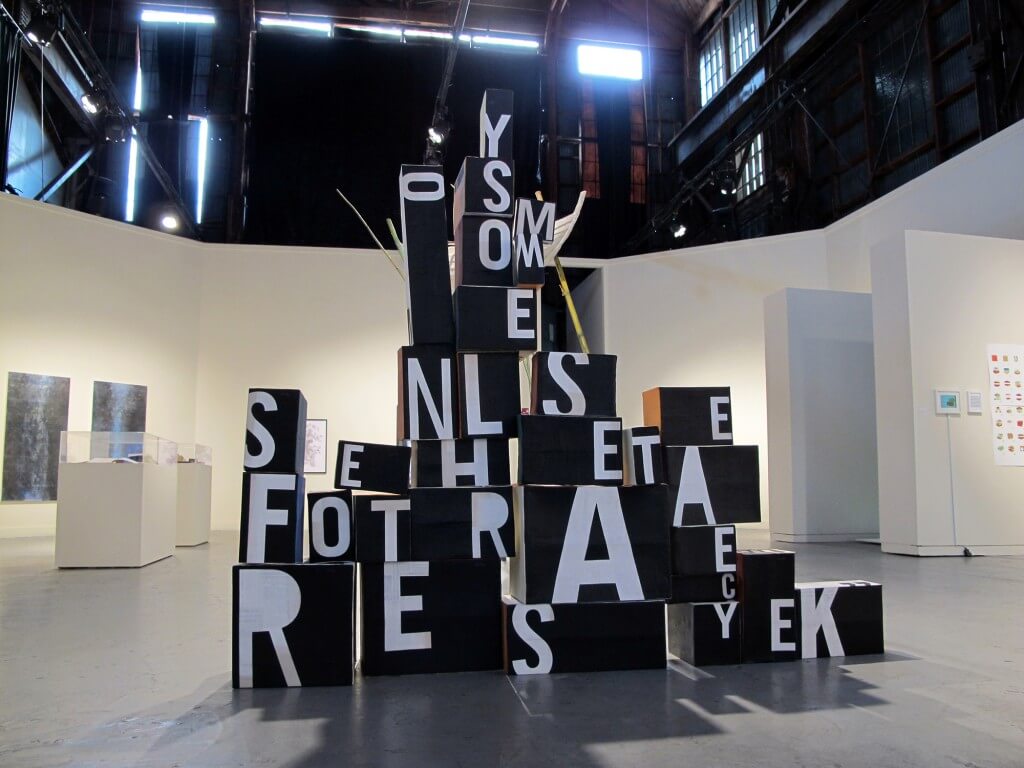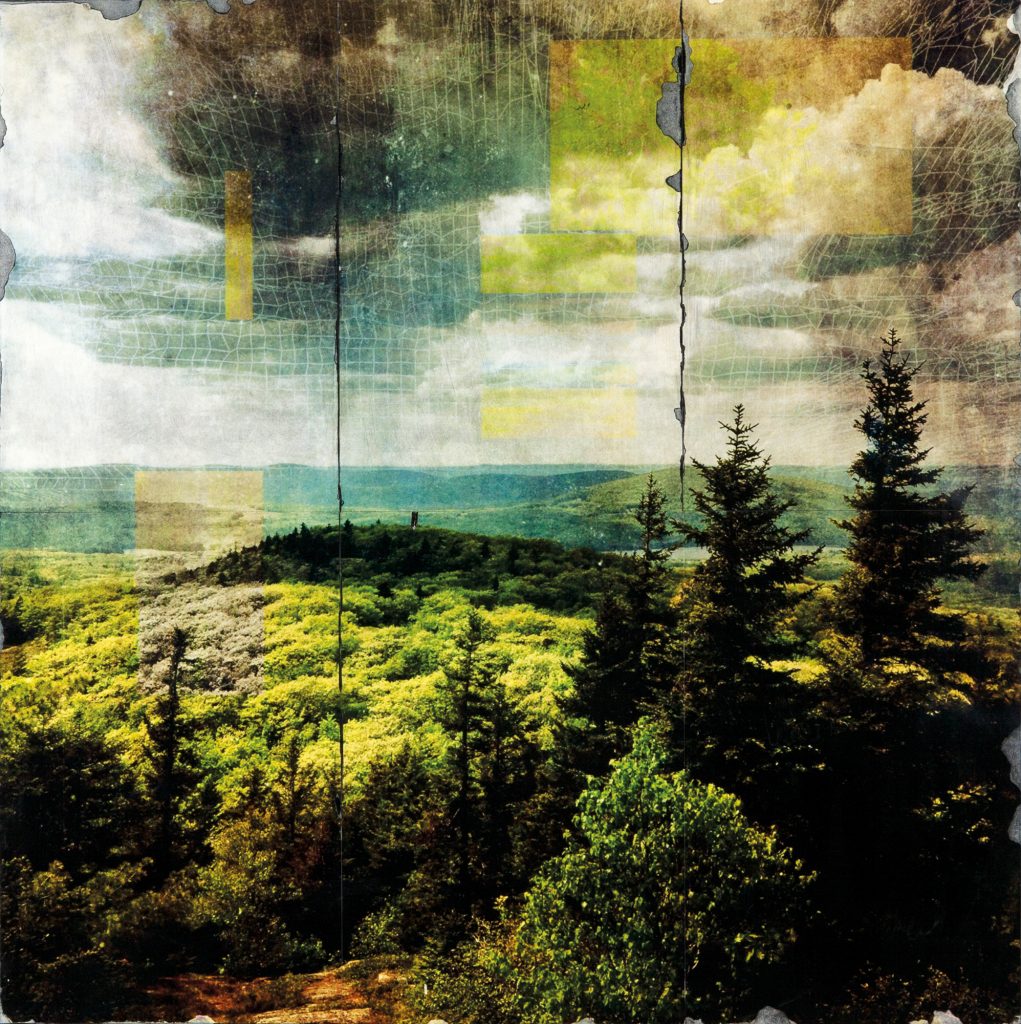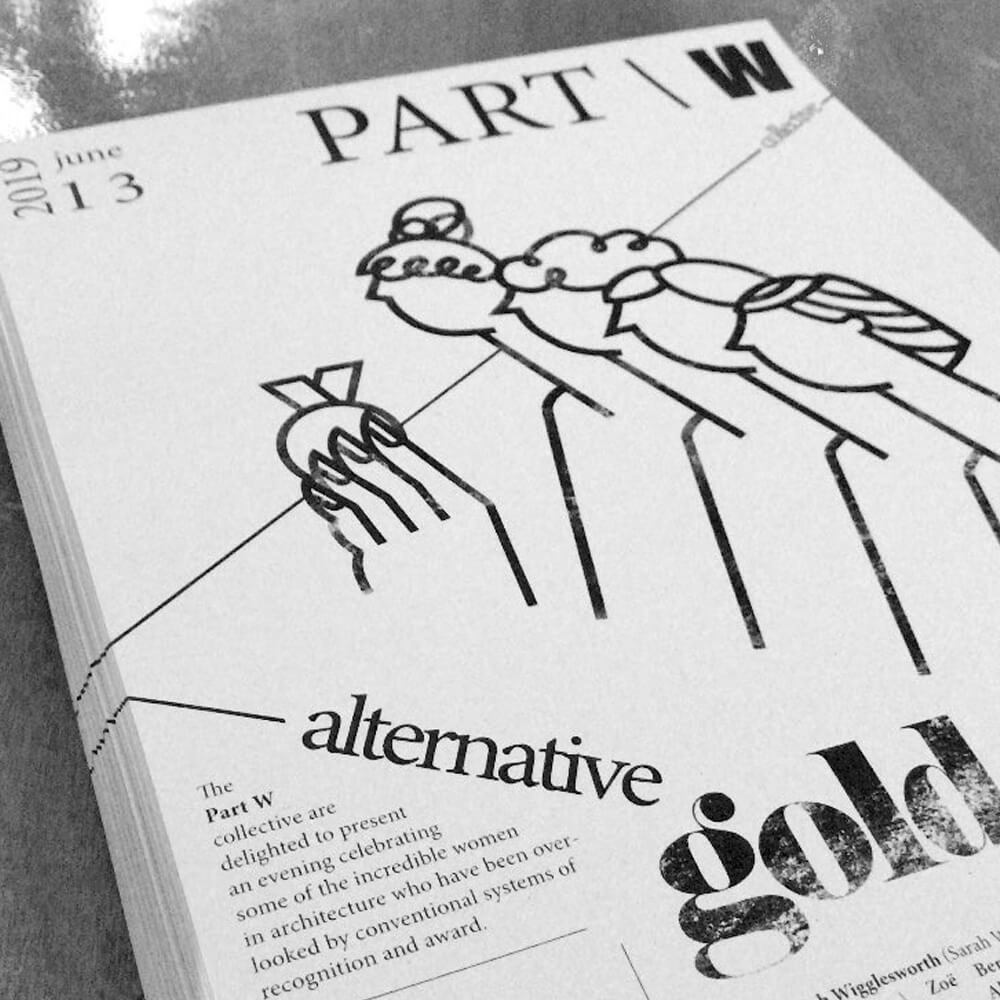Michael Bartalos: High Tech and Low Tech


Michael Bartalos’ work draws from contemporary and ancient typography, space technology, and a unique depth of influences, inspirations, and concepts. FRONTRUNNER interviewed him this past week.
You have an incredibly diverse art practice. How have your interests evolved?
My background is in printmaking and design. I initially applied those to producing limited edition artists’ books to explore my interests in multiples, abstract narrative, and science themes. My intrigue with book structure and materials led me to more sculptural work and eventually larger installations. Which isn’t to say that I’ve left he book form behind. Quite the opposite in fact; I refer back to the book as symbol, vessel and interface throughout all my work. It remains a foundation from where I formulate and launch new projects in other media.
While my approaches to art making have been diverse, my preoccupation with science has been consistent. I draw largely on biology and the Earth sciences for material and combine them with anthropological and sociological concerns to formulate ideas. Both my parents are physicians which likely put me on the human sciences track, and my regard for environmental issues grew out of my travels.

Do you consider your work high tech/low tech?
It’s a mix. While much of my work is formulated digitally, it’s ultimately expressed in analog media such as letterpress printing and manually-fashioned artworks. That’s because I like using my hands and the computer equally, and enjoy juxtaposing technologies of different eras. For example I might employ laser-cutting tools to shape hand-made bark papers, or shoot video with the intention of manually manipulating the projection. It opens up more possibilities on many levels.
Tell me about the CryoSuit.
The CryoSuit grew out of some playful thoughts about time. First, that time could be said to be absent at the geographic Poles. These spots are the convergence of all time zones, where one can’t say it’s anything o’clock. In a sense it’s zero o’clock. Time is frozen. Time is also frozen for things trapped in ice. From a frozen organism’s point of view, no time has passed between its freezing and thawing; it’s suspended. So I thought to play these two concepts of “stopping” time off each other — that of being on the ice at the Poles, and that of being “on ice” as in cryogenics labs. The CryoSuit enables both. As a means of containment, preservation, and sustenance, the CryoSuit is not unlike a book. By physically connecting the two, I hope to convey their similarities and shared allusion to “timelessness.”

Is the book the wearer’s lifeline?
Yes, exactly. A network of tubes “nourishes” the cryopreserved occupant with the content of the books.
Sleep Deep Cryo Heap is a companion piece to the CryoSuit. Tell me more about how this project developed and took shape.
Sleep Deep Cryo Heap is one of the “nourishing” books mounted on the CryoSuit. The book’s content, addressing cryonics, is intended to be ‘absorbed’ by the suit’s occupant while in a suspended state.
These pieces were produced as part of my Xerox PARC residency project titled Polar Book Lab. Polar Book Lab and its subject of time grew out of my long fascination with Lake Vostok, Antarctica’s largest subglacial body of water. It lies deep beneath the Russian research station Vostok which recorded Earth’s lowest natural temperature at −89.2 °C (−128.6 °F). Discovered in recent decades, the lake’s inhospitable environment is believed to harbor life that evolved in isolation for up to 25 million years. This initial encounter with concepts of containment, preservation, and sustenance lay the groundwork for the rest of the project.
Do you research hieroglyphics or reference various forms of mark making? Your characters are almost ancient or otherworldly/comical.
Yes, I’m captivated by writing systems, letterforms, symbols and codes. I enjoy researching, understanding, and appropriating graphic languages and reconsidering them in various contexts. I draw on constructed visual languages such as Blissymbols and the textual devices of comics and cartoons, and reconfigure elements to make hybrids or invent new marks and motifs altogether.

Is there a little humor in a piece like Comics Code?
Yes, I occasionally use humor in my work to engage the viewer, or at least provide an entry to a piece. Comics Code derives humor partly from its stylized shapes, partly from the fact that it employs collaged comic book fragments, and partly from its fractured, absurd narrative. The piece addresses a serious topic actually; that of banned literature, specifically comics of the 1950s censored by the Comics Code Authority. The Code’s imposed restrictions sanitized the industry to the extent that it put most of the comic publishers of the time out of business. The title alludes to this enforcement as well as to shorthand visual devices characteristic of comics.
Your mixed media work is some of my favorite. There is a very nice feeling of motion and balance. What are stories behind the materials chosen?
I’m glad you like these pieces. They represent some of my earlier forays into dimensional assemblages. They include organic materials such as handmade papers, wood, bamboo, seeds, and twine — matter not far removed from their natural state. Combined with more processed items like wire, these compositions speak to transformation and shifts over time. They are mini-narratives of sorts, expressing impermanence, motion, and possibility.










Responses